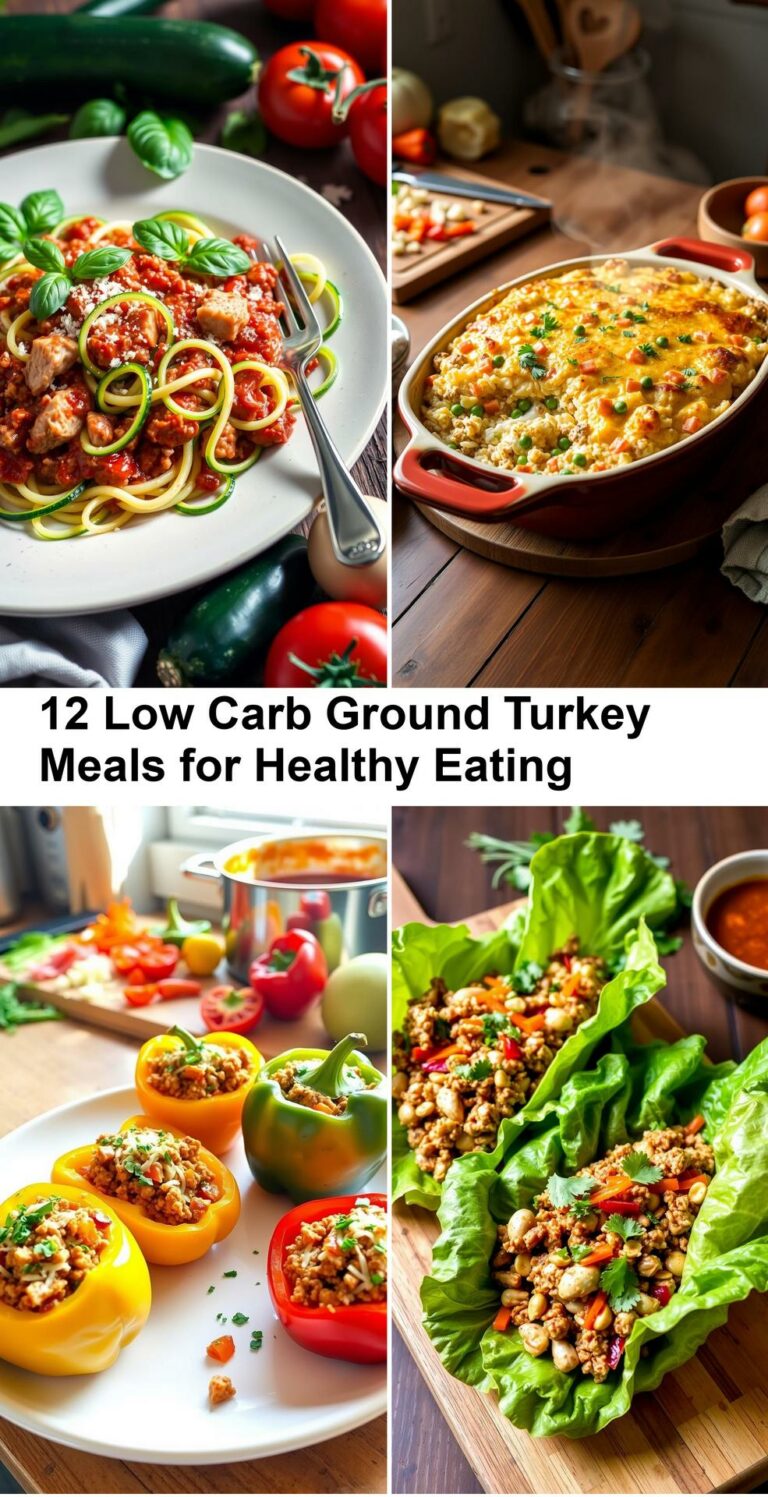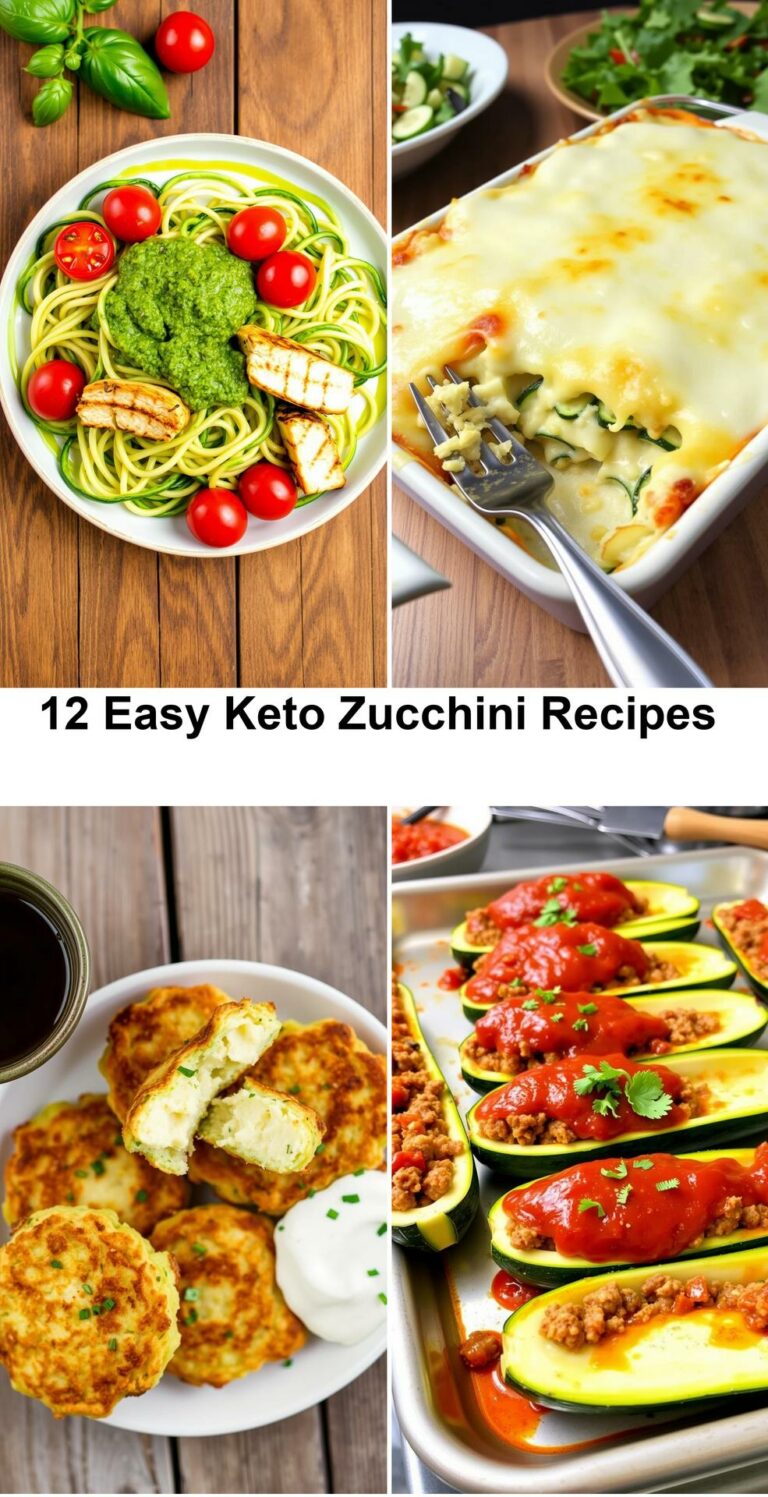Keto Falafel: A Low-Carb Twist on a Classic Dish
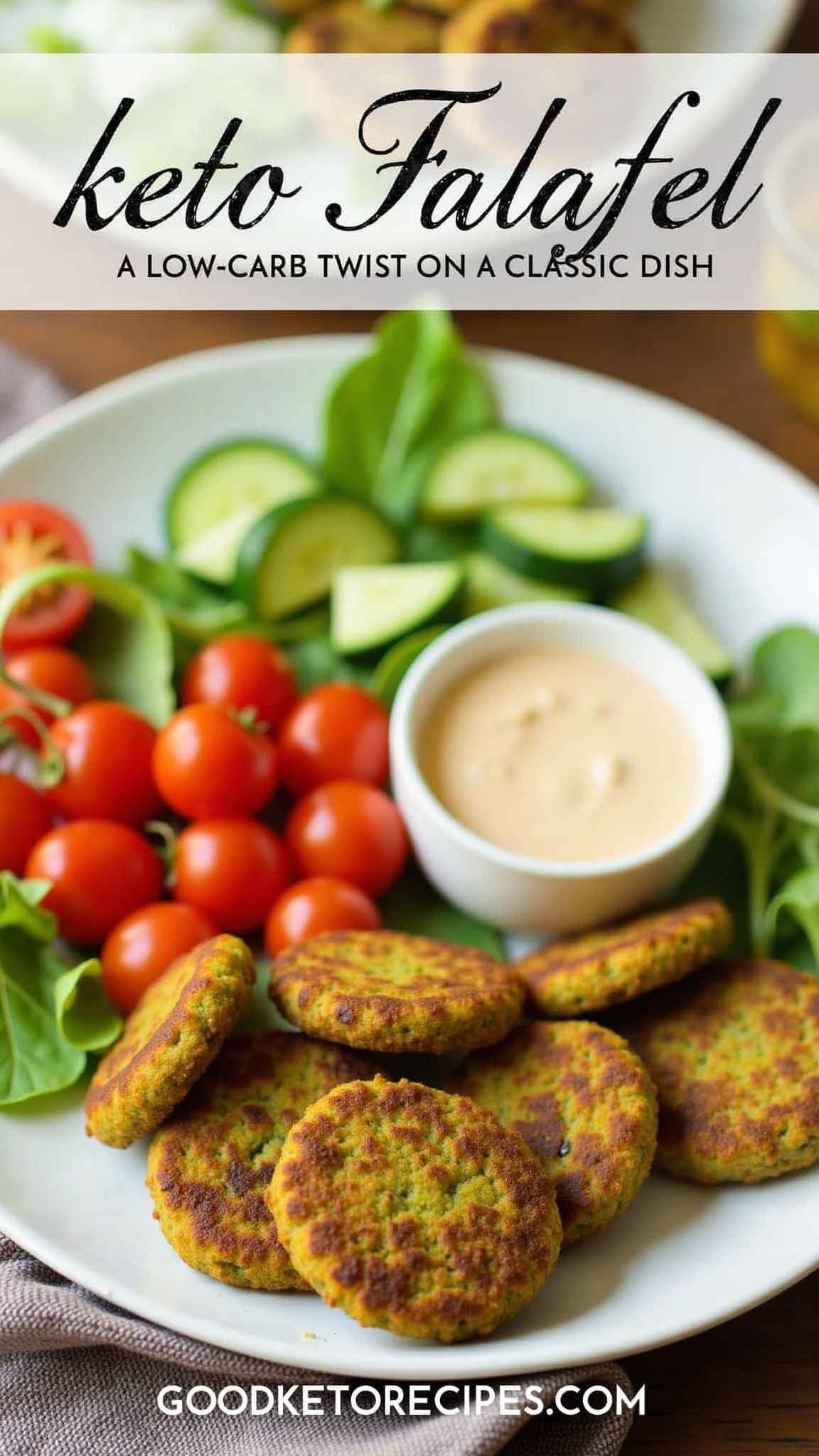
Craving Falafel on Keto?
Traditional falafel, while delicious, is primarily made from chickpeas, a legume that’s not keto-friendly due to its high carbohydrate content. Following a ketogenic or paleo diet often means saying goodbye to many beloved foods. But what if you could enjoy the crispy, savory goodness of falafel without derailing your low-carb lifestyle? This recipe offers a solution: a delicious, keto and paleo-friendly falafel that uses alternative ingredients to deliver authentic flavor and texture. We’ll explore the key substitutions, step-by-step instructions, and tips for creating the perfect low-carb falafel.
Understanding Keto and Paleo Restrictions
Before diving into the recipe, it’s important to understand why traditional falafel isn’t suitable for keto or paleo diets.
- Ketogenic Diet: The ketogenic diet is a very low-carb, high-fat diet. It aims to induce ketosis, a metabolic state where the body burns fat for energy instead of carbohydrates. Chickpeas are relatively high in carbs, making them unsuitable.
- Paleo Diet: The paleo diet focuses on foods that our hunter-gatherer ancestors would have eaten. It excludes grains, legumes (like chickpeas), dairy, and processed foods.
Both diets restrict legumes, the primary ingredient in traditional falafel.
Key Ingredient Substitutions
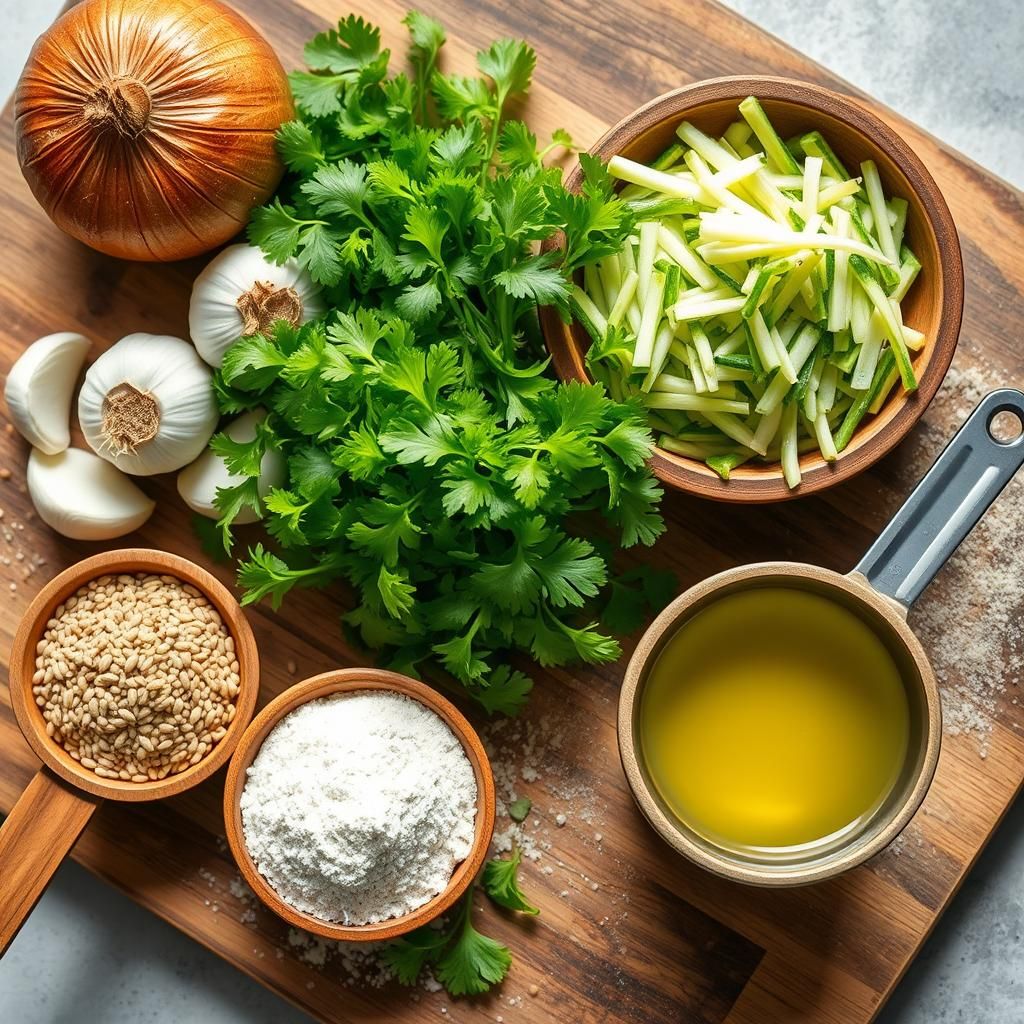
To make falafel keto and paleo-compliant, we need to replace the chickpeas. Here are the star ingredients of this recipe:
- Almond Flour: This is the base of our keto falafel. Almond flour is low in carbohydrates and provides a good source of healthy fats. It also helps bind the ingredients together. Choose blanched almond flour for the best texture.
- Flaxseed Meal: Flaxseed meal acts as a binder, mimicking the role of chickpeas in holding the falafel together. It’s also a great source of fiber and omega-3 fatty acids.
- Cauliflower Rice (Optional): Adding finely riced cauliflower can add extra moisture and texture, creating a lighter falafel. Ensure it’s well-drained to prevent the mixture from becoming too soggy.
- Zucchini (Optional): Grated zucchini adds similar benefits.
- Hemp seeds (Optional): Add extra protein and healthy fats.
Essential Spices and Flavorings
The flavor of falafel comes largely from its blend of herbs and spices. These remain the same in our keto version:
- Fresh Parsley: A crucial ingredient for authentic falafel flavor.
- Fresh Cilantro: Adds a bright, citrusy note.
- Garlic: Provides a pungent, savory element.
- Onion: Adds sweetness and depth of flavor.
- Cumin: A warm, earthy spice that’s characteristic of Middle Eastern cuisine.
- Coriander: Adds a lemony, floral note.
- Salt and Pepper: Essential for seasoning.
- Cayenne Pepper (Optional): For a touch of heat.
- Lemon Juice: Adds brightness and acidity.
Keto Falafel Recipe (Paleo-Friendly)
Here’s a detailed, step-by-step recipe for making delicious keto falafel:
Yields: About 12-15 falafel
Prep time: 20 minutes
Cook time: 20-25 minutes
Ingredients:
- 1 ½ cups blanched almond flour
- ¼ cup flaxseed meal
- 1 cup finely riced cauliflower (optional, well-drained) OR ½ cup grated zucchini (well-drained)
- ½ cup packed fresh parsley, roughly chopped
- ½ cup packed fresh cilantro, roughly chopped
- 1 small onion, roughly chopped
- 3-4 cloves garlic, minced
- 1 tablespoon ground cumin
- 1 tablespoon ground coriander
- 1 teaspoon salt
- ½ teaspoon black pepper
- ¼ teaspoon cayenne pepper (optional)
- 1 tablespoon lemon juice
- 2-3 tablespoons avocado oil or coconut oil, for frying
Equipment:
- Food processor
- Large bowl
- Baking sheet (if baking)
- Large skillet (if frying)
Instructions:
- Prepare the Cauliflower/Zucchini (if using): If using cauliflower rice, ensure it’s finely riced and very well-drained. You can microwave it for a few minutes and then squeeze out any excess moisture using a clean kitchen towel or cheesecloth. If using zucchini, grate it and squeeze out as much liquid as possible.
- Combine Dry Ingredients:
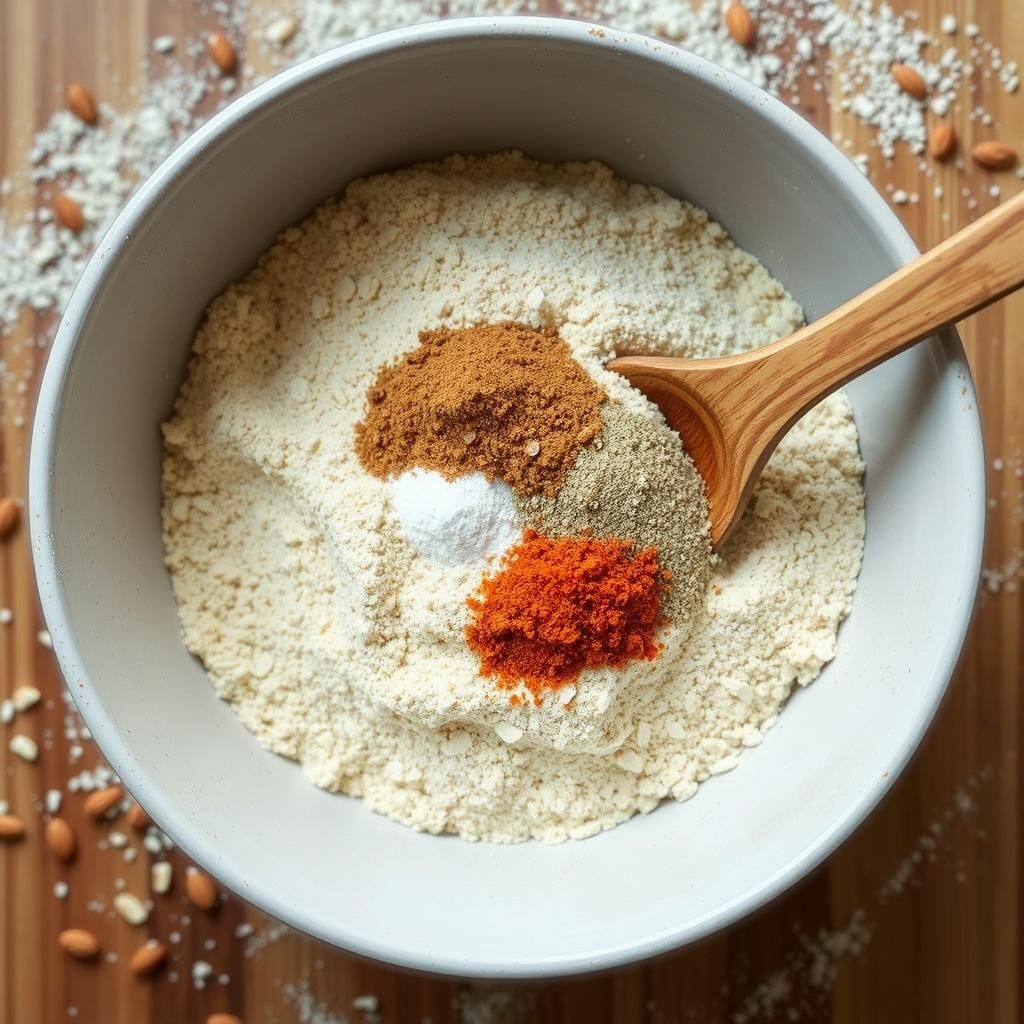 In a large bowl, combine the almond flour, flaxseed meal, cumin, coriander, salt, pepper, and cayenne pepper (if using).
In a large bowl, combine the almond flour, flaxseed meal, cumin, coriander, salt, pepper, and cayenne pepper (if using). - Process Wet Ingredients:
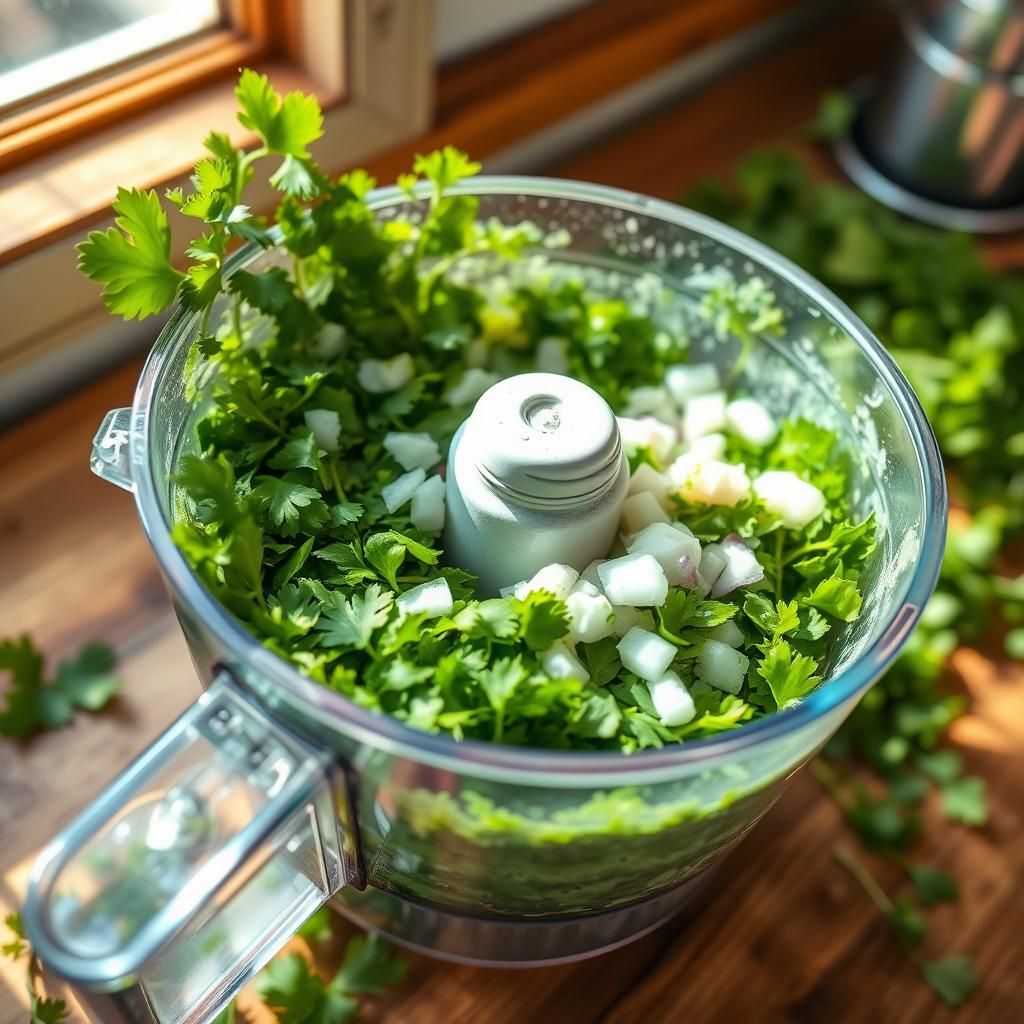 In a food processor, combine the parsley, cilantro, onion, garlic, and lemon juice. Pulse until finely chopped but not completely pureed. You want some texture.
In a food processor, combine the parsley, cilantro, onion, garlic, and lemon juice. Pulse until finely chopped but not completely pureed. You want some texture. - Combine Wet and Dry:
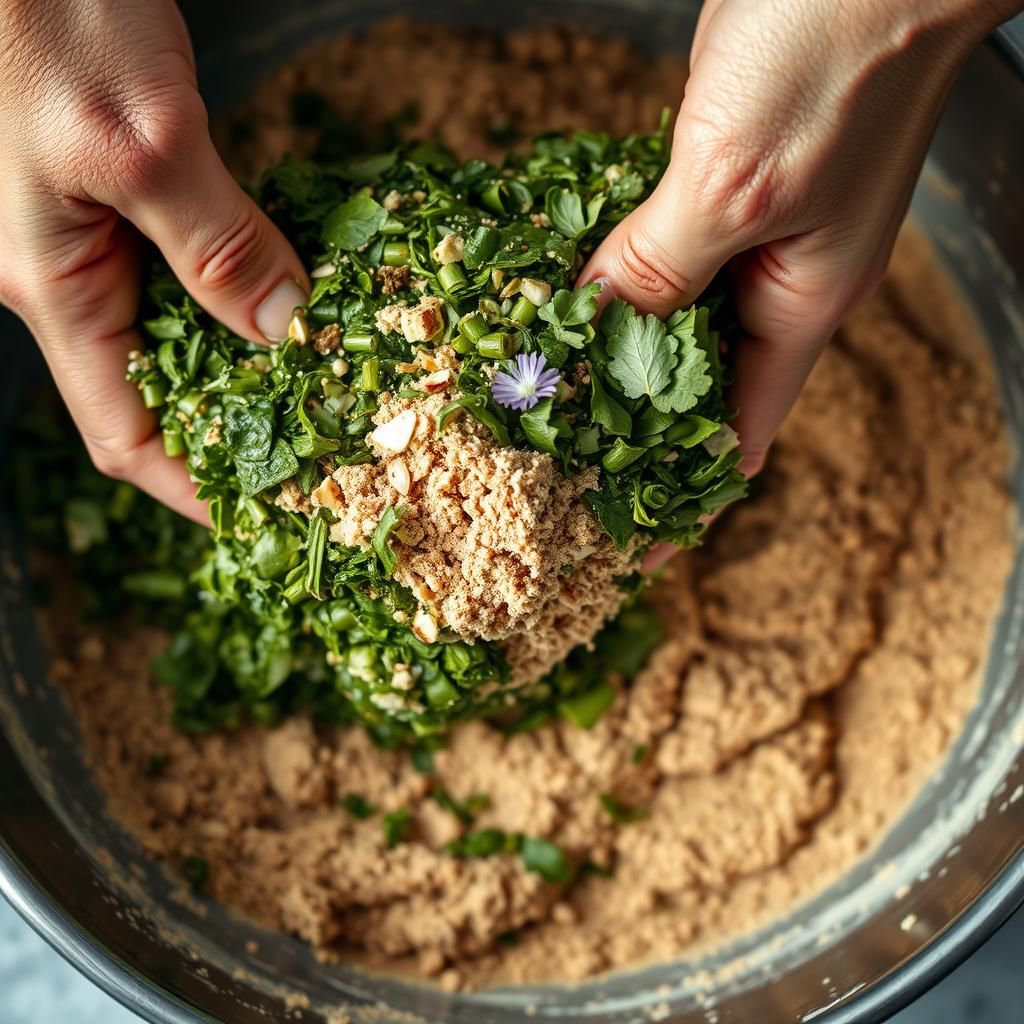 Add the processed herb mixture and the drained cauliflower rice (or zucchini) to the bowl with the dry ingredients.
Add the processed herb mixture and the drained cauliflower rice (or zucchini) to the bowl with the dry ingredients. - Mix Thoroughly: Mix everything together with your hands or a spatula until a well-combined, slightly sticky dough forms. If the mixture seems too dry, add a tablespoon of water at a time. If it’s too wet, add a little more almond flour.
- Chill the Mixture (Optional but Recommended): Cover the bowl and refrigerate the falafel mixture for at least 30 minutes. This helps the flavors meld and makes the falafel easier to shape.
- Shape the Falafel:
 Take about 1-2 tablespoons of the mixture and shape it into small balls or patties.
Take about 1-2 tablespoons of the mixture and shape it into small balls or patties. - Cooking Methods:
- Pan-Frying (Recommended for Crispy Texture):
 Heat 2-3 tablespoons of avocado oil or coconut oil in a large skillet over medium-high heat. Once hot, add the falafel in a single layer, being careful not to overcrowd the pan. Fry for 3-4 minutes per side, or until golden brown and crispy.
Heat 2-3 tablespoons of avocado oil or coconut oil in a large skillet over medium-high heat. Once hot, add the falafel in a single layer, being careful not to overcrowd the pan. Fry for 3-4 minutes per side, or until golden brown and crispy. - Baking:
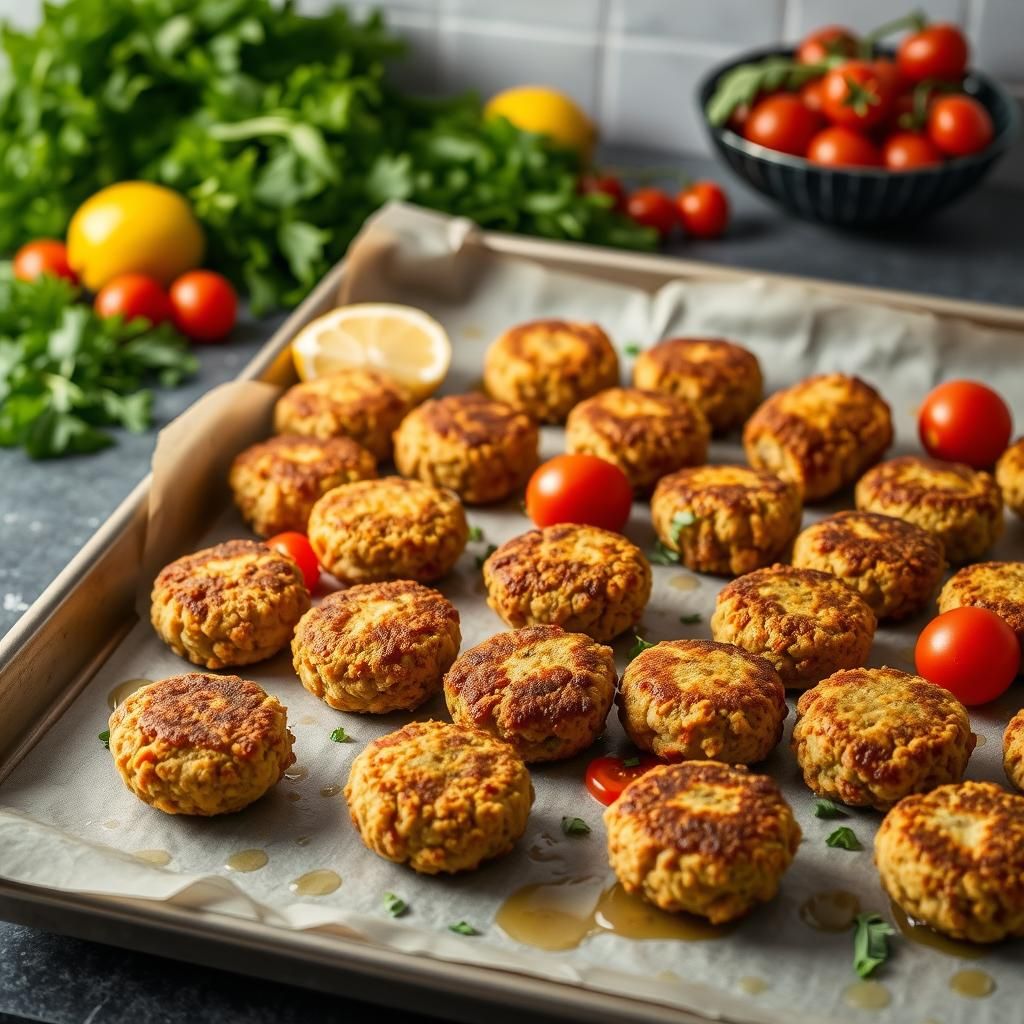 Preheat your oven to 375°F (190°C). Place the shaped falafel on a baking sheet lined with parchment paper. Bake for 20-25 minutes, flipping halfway through, until golden brown and cooked through. Baked falafel will be less crispy than pan-fried.
Preheat your oven to 375°F (190°C). Place the shaped falafel on a baking sheet lined with parchment paper. Bake for 20-25 minutes, flipping halfway through, until golden brown and cooked through. Baked falafel will be less crispy than pan-fried. - Air Frying: Preheat the air-fryer to 375°F. Cook the falafel for about 10-12 minutes, flipping halfway.
- Pan-Frying (Recommended for Crispy Texture):
- Serve:
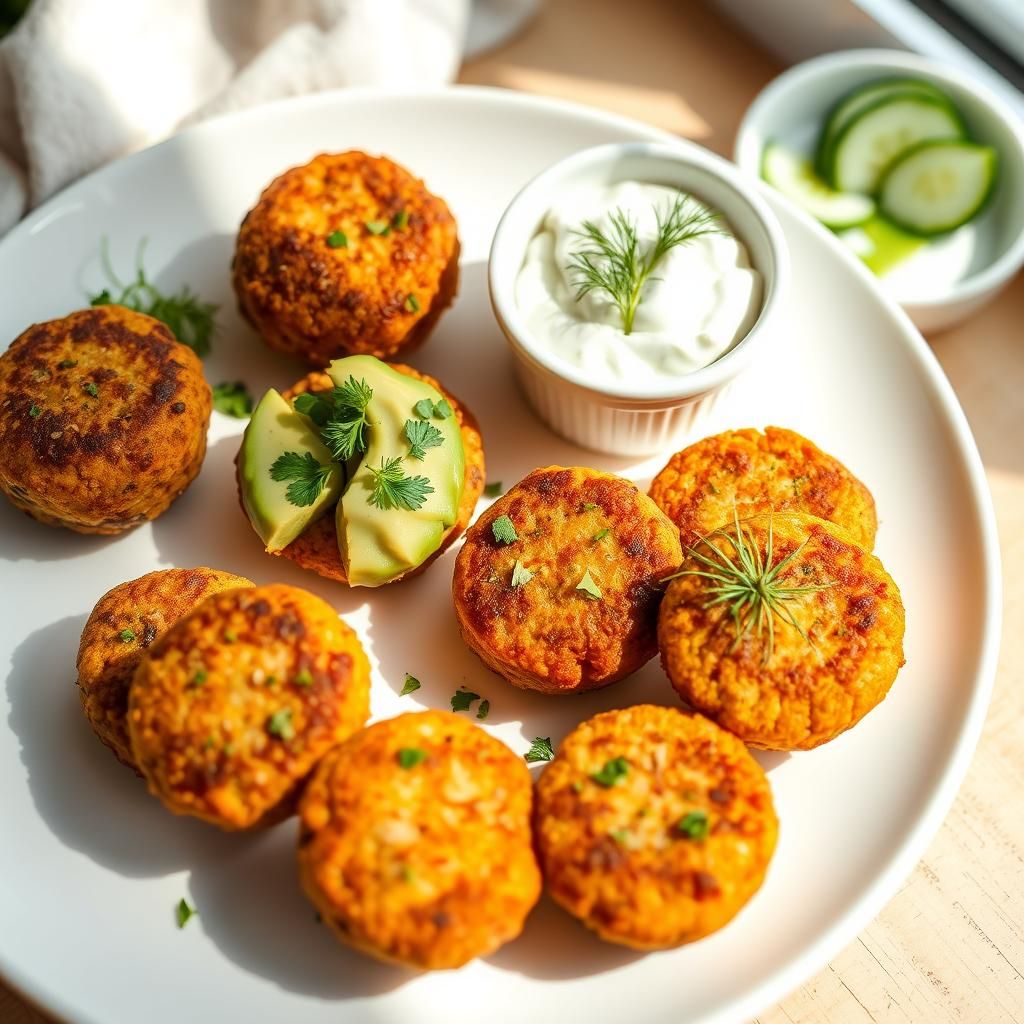 Serve the keto falafel warm with your favorite keto-friendly sides and sauces.
Serve the keto falafel warm with your favorite keto-friendly sides and sauces.
Serving Suggestions and Keto-Friendly Accompaniments
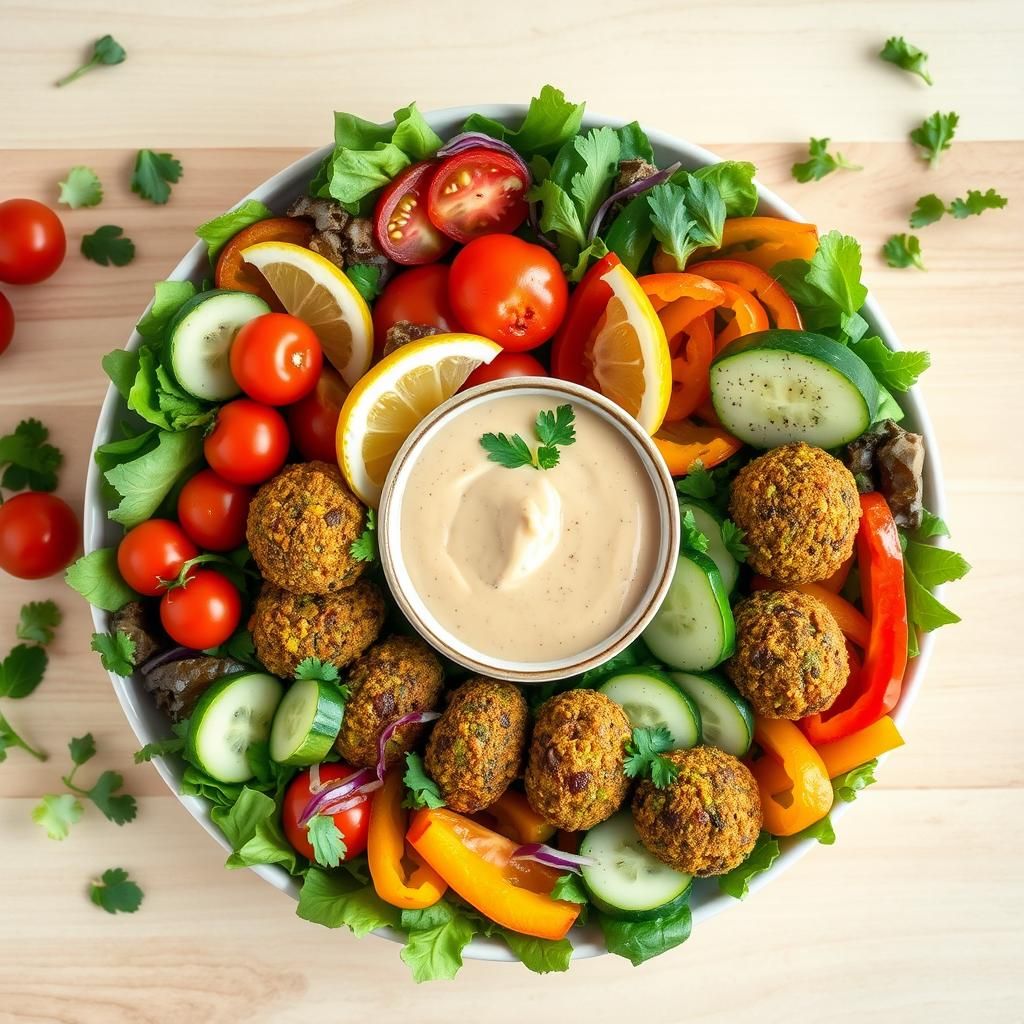
Keto falafel can be enjoyed in various ways:
- Salad Bowls: Serve the falafel over a bed of mixed greens with keto-friendly vegetables like cucumbers, tomatoes, and bell peppers.
- Keto-Friendly Wraps: Use low-carb tortillas or lettuce wraps to create falafel wraps.
- Dips and Sauces:
- Tahini Sauce (Keto-Friendly): Make a keto-friendly tahini sauce by thinning tahini with lemon juice, water, and a pinch of salt.
- Tzatziki Sauce (Keto-Friendly): Use full-fat Greek yogurt, cucumber, garlic, dill, and lemon juice to make a creamy tzatziki.
- Avocado Crema: Blend avocado with lime juice, cilantro, and a little water for a creamy, flavorful sauce.
- Spicy Mayo: Mix mayonnaise with sriracha or your favorite hot sauce.
- Hummus Alternative: Use cauliflower instead of chickpeas.
Tips for Perfect Results
- Don’t Over-Process: Avoid over-processing the herb mixture in the food processor. You want a slightly coarse texture, not a paste.
- Drain Excess Moisture: Thoroughly draining the cauliflower rice or zucchini is crucial for preventing soggy falafel.
- Chill the Dough: Chilling the dough helps the falafel hold its shape better during cooking.
- Adjust Seasoning: Taste the mixture before cooking and adjust the seasoning to your liking.
- Don’t Overcrowd the Pan: When pan-frying, cook the falafel in batches to ensure they cook evenly and become crispy.
- Use a Cookie Scoop: Makes the falafel balls the same size.
Troubleshooting Common Issues
- Falafel Falling Apart: This usually happens if the mixture is too wet or not bound properly. Add more almond flour or flaxseed meal, or chill the dough for a longer period.
- Dry Falafel: If the falafel is too dry, add a little more lemon juice or a tablespoon of water to the mixture.
- Bland Falafel: Make sure you’re using enough spices and herbs. Don’t be afraid to adjust the seasoning to your preference.
Nutritional Information
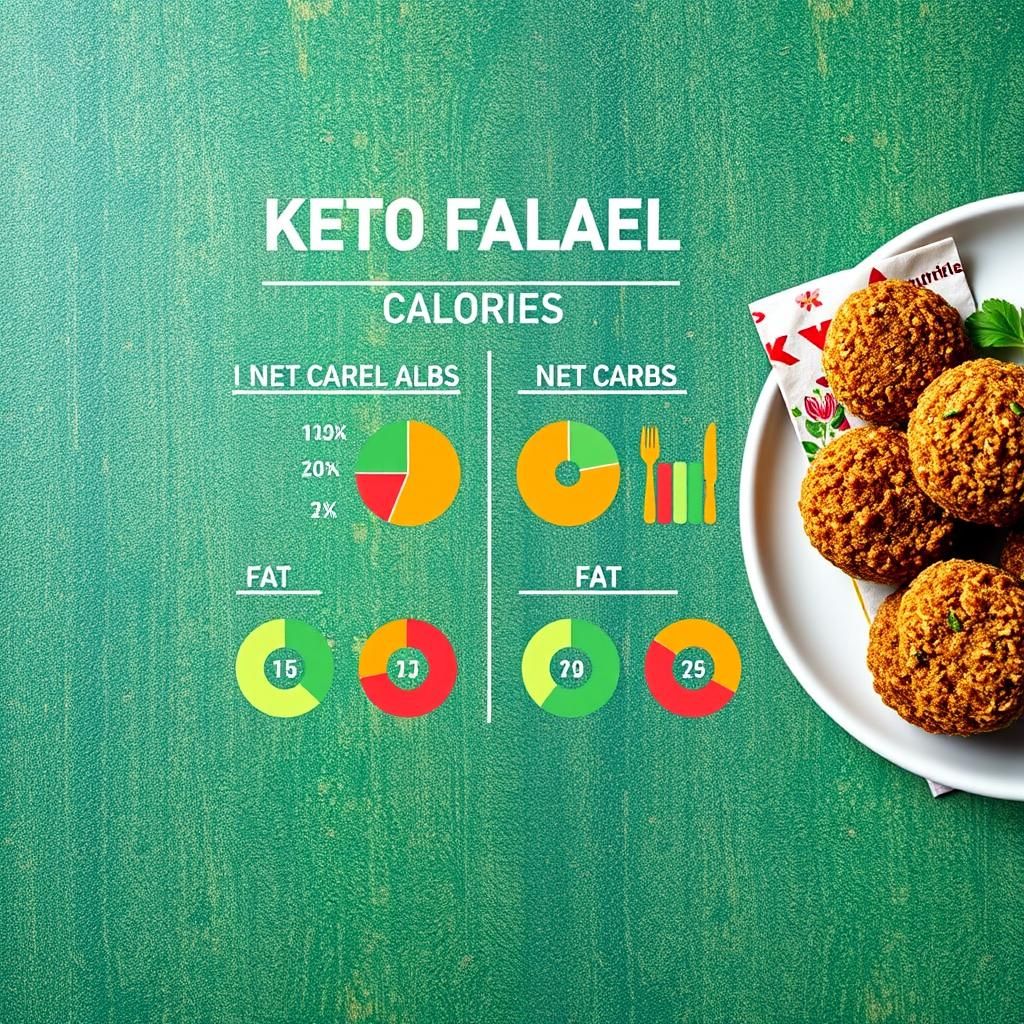
(Approximate, per serving – about 3 falafel)
- Calories: 200-250
- Net Carbs: 3-5g
- Fat: 15-20g
- Protein: 5-8g
(Note: This is an estimate and will vary depending on the specific ingredients and serving size.)
Final Thoughts
This keto falafel recipe demonstrates that you don’t have to sacrifice your favorite foods to maintain a healthy, low-carb lifestyle. By using clever ingredient substitutions and traditional flavorings, you can enjoy the delicious taste and satisfying texture of falafel without the carbs. Whether you’re following a ketogenic, paleo, or simply a low-carb diet, this recipe offers a flavorful and guilt-free way to indulge in a classic Middle Eastern dish. Experiment with different cooking methods and serving suggestions to find your perfect keto falafel experience. Enjoy!
Check Out This
Affiliate Link Disclosure: Some of the links in this post are affiliate links. This means that if you click on the link and make a purchase, I may receive a small commission at no extra cost to you. I only recommend products or services that I personally use and believe will be valuable to my readers.



